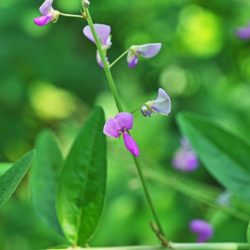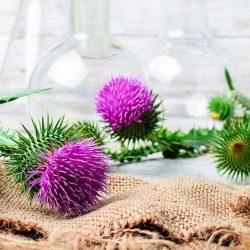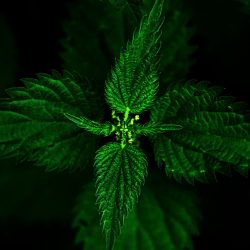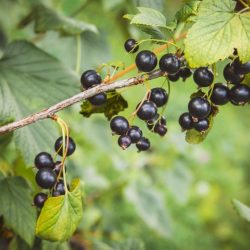The word artichoke is explained by an etymology of Arabic origin “ ardi chouk” , which means: “thorny terrestrial”, taken up and transformed by the Lombard term “ articiocco” . But at this point, we are still far from Lombardy. However, the future artichoke, a cardoon in transformation , slowly takes its path and reaches the kingdom of Naples in the 15th century, then passes through Florence where its presence is reported in 1466, and in Venice seven years later.
A little history
The artichoke seems to cross the Alps towards France during one of the eleven wars between the French and the Italians between 1494 and 1559. It is, according to Gibault , the development work of Italian horticulturalists, carried out during the first half of the 16th century, that Matthiole is able to relate the existence of various varieties of artichokes which were, he says, abundant in Tuscany of his time.
But this thesis is controversial: according to Fournier , the origin of the artichoke is much older than that attributed to it by Gibault . It signals to everyone’s attention that obtaining it could then be much more spread out over time than one imagines. In this, he recalls the existence of ancient Egyptian pictorial representations ; among plants and fruits, large (stylized) flower heads appear quite similar to those of an artichoke, at least to a very old cardoon (perhaps this plant described by Theophrastus in the 4th century BC and already consumed for its “background”).
It is estimated that around 2000 years ago, an accentuated cultivation of this plant led, perhaps independently of the horticultural work of “breeders” and other “breeders”, to the appearance of cultivated cardoons of which one could also distinguish thorny and unarmed varieties. The artichoke would therefore be a transformed cardoon . In the same way that the culture is ingenious to make the petioles of the cardoon bigger, it has gradually found a way to soften the flower heads of the artichoke.
In the centuries that followed, doctors and other apothecaries set about increasing the number of studies on the subject of therapeutic leaves of the artichoke , while gardeners and agronomists worked to develop market garden varieties.
What are the main pharmacological properties of Artichoke leaves?
Hepatobiliary properties:
The artichoke is cholagogue , amphocholeretic (regulation of choleresis), cholecystokinetics as well as anti cholestatic , thanks to the flavonoids (luteolin flavonol) that it contains. This increased secretion and elimination of bile acids explain the effectiveness of artichoke in dyspepsia (pain, discomfort, burning sensation in the abdomen, nausea, vomiting, etc.) and in the syndrome. irritable bowel (bloating, abdominal pain, constipation, etc.).
In 2003, a multicenter, double-blind, placebo-controlled and randomized trial, carried out over 6 weeks in 244 patients with functional dyspepsia, notably demonstrated a statistically significant efficacy of the aqueous extract of artichoke leaves.
Antioxidant (with increased glutathione peroxidase), ethanolic extract has the most powerful antioxidant activity. The aqueous and ethanolic extracts of the leaves of Cynara scolymus in vitro inhibit the basal and stimulated production of reactive forms of oxygen (ROS) in endothelial cells and in monocytes in a dose-dependent manner, thereby demonstrating that artichoke exerts marked protective properties against oxidative stress induced by inflammatory mediators and oxidized LDL-cholesterol. The plant’s antioxidant activities, demonstrated by around ten studies in the early 2000s, are also linked to its flavonoids and phenolic compounds.
Protective hepato (by inhibition of intracellular protein kinases, by inhibition of nitrosation and by induction of apoptosis), the artichoke leaf thus promotes hepatic regeneration .
Intestinal property:
Artichoke insulin also exerts a bifidogenic effect promoting the development of bifidobacteria and accentuating their beneficial role on intestinal health, the immune system and on the synthesis or absorption of several nutrients. It therefore modulates the composition of the intestinal microbiota .
Lipid-lowering property:
The artichoke also causes an inhibition of hepatic cholesterol synthesis , by an indirect inhibition of the activity of HMGGA-reductase by cynaroside (luteolin aglycone). It is also responsible for lowering the concentration and oxidation of LDL cholesterol in hyperlipoproteinemia.
Metabolic property:
Artichoke has a mild to moderate inhibitory effect on the activity of key enzymes in metabolic syndrome . Note that it is also hypo-uricemic by inhibition of xanthine oxidase.
Other properties:
- Diuretics
- Hormonal
- Antiproliferative
Are there any precautions for use with Artichoke?
Contraindications:
- Contraindicated in case of obstruction of the bile ducts
- Not recommended in case of sensitivity to asteraceae, such as yarrow or chamomile
- According to the EMA, the use of artichoke is not recommended in pregnant or breastfeeding women in the absence of sufficient safety data to exclude any risk associated with its use. For the same reasons, the European agency specifies that the use in children under 12 has therefore not been established.
Side effects :
- Possibility of nausea, diarrhea, polyuria on sensitive subjects.
Precautions for use:
- Medical supervision is necessary in case of infracentimetric stones of the gallbladder, cholangitis or severe hepatic insufficiency.
Drugs interactions :
- The diuretic effects of artichoke could indeed be added to those of other plants or diuretic drugs.
How to take Artichoke and in what dosage?
Dry form:
- As a food supplement, in the form of a standardized extract of a fresh plant, a dry extract, in capsules or titrated
Liquid form:
- Standardized fluid extract of fresh plant : 5 ml twice a day in water.
- Full suspension of fresh plant : 5 ml 2 to 3 times a day in water.
- Hydroalcoholic fluid extract : 10 to 30 drops 2 to 3 times a day in water.
- Infusion : 1 tsp. coffee to steep for 10 minutes in boiling water. Drink 1 cup before each meal.
Artichoke in masterly preparation of standardized extracts in liquid form (EPS)
In association with black radish :
In the case of postprandial dyspepsia, detox (especially when taking xenobiotics: pills, statins, antidepressants, NSAIDs ), hepatobiliary constipation, prevention of the adverse effects of dieting ( constipation, liver problems ) .
In association with fumitory :
For the regulation of bile flow (amphocholeresis) in digestive disorders of hepatobiliary origin.
In association with lemon balm :
In the treatment of dyspepsia.
In association with the lady’s mantle 2/3 for 1/3 of artichoke:
Against premenstrual syndrome with breast tension and / or weight gain, cycle disorders, recurrent miscarriages due to luteal insufficiency.
Medical bibliographic sources and clinical trials :
- Villiger A. et al., In vitro inhibitory potential of Cynara scolymus, Silybum marianum, Taraxacum officinale, and Peumus boldus on key enzymes relevant to metabolic syndrome, Phytomedicine, 2015
- Meyer D. et al., The bifidogenic effect of inulin and oligofructose and its consequences for gut health; Eur J Clin Nutr., 2009
- Bosscher D., Breynaert A. et al; Food-based strategies to modulate the composition of the intestinal microbiota and their associated health effects; J Physiol Pharmacol., 2009
- Kelly G., Inulin-type prebiotics: a review (Part 2). Altern Med Rev., 2009
- European Medicines Agency, Assessment report on Cynara cardunculus L. (syn. Cynara scolymus L.), 2018
- Zapolska-Downar D. et al., Protective properties of artichoke (Cynara scolymus) against oxidative stress induced in cultured endothelial cells in monocytes; Life Sci., 2002
- Holtmann G. et al., Efficacy of artichoke leaf extract in the treatment of patients with functional dyspepsia; a six-week placebo-controlled, double-blind, multicenter trial, Aliment Pharmacol Ther., 2003
- Kollia E. et al., Antioxidant activity of Cynara scolymus L. and Cynara cardunculus L. extracts obtained by different extraction techniques; Nat Prod Res., 2017







